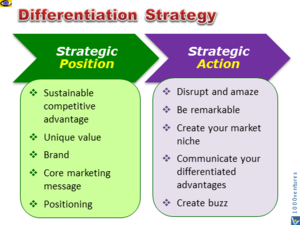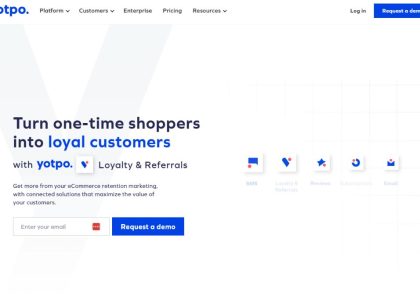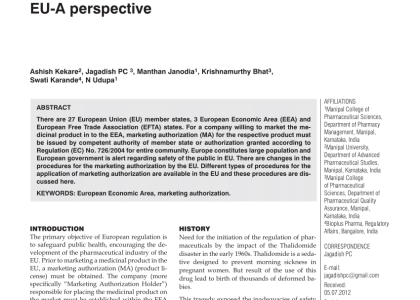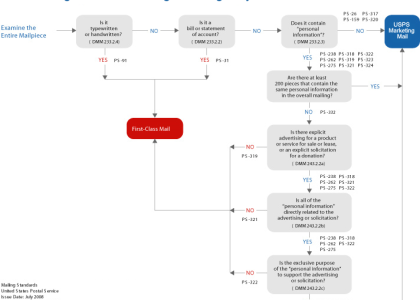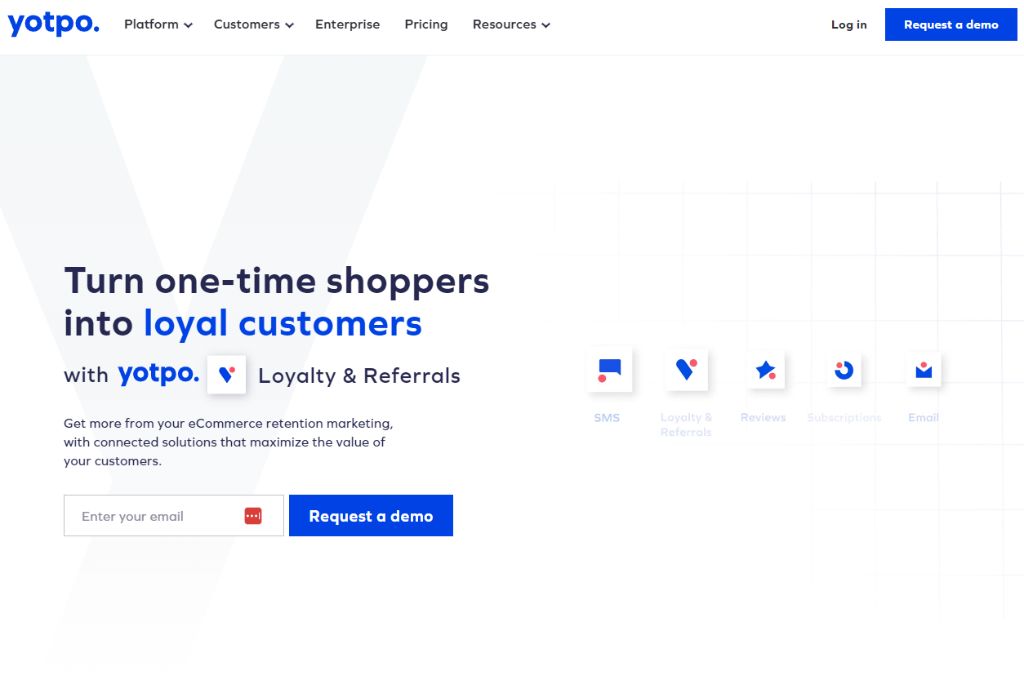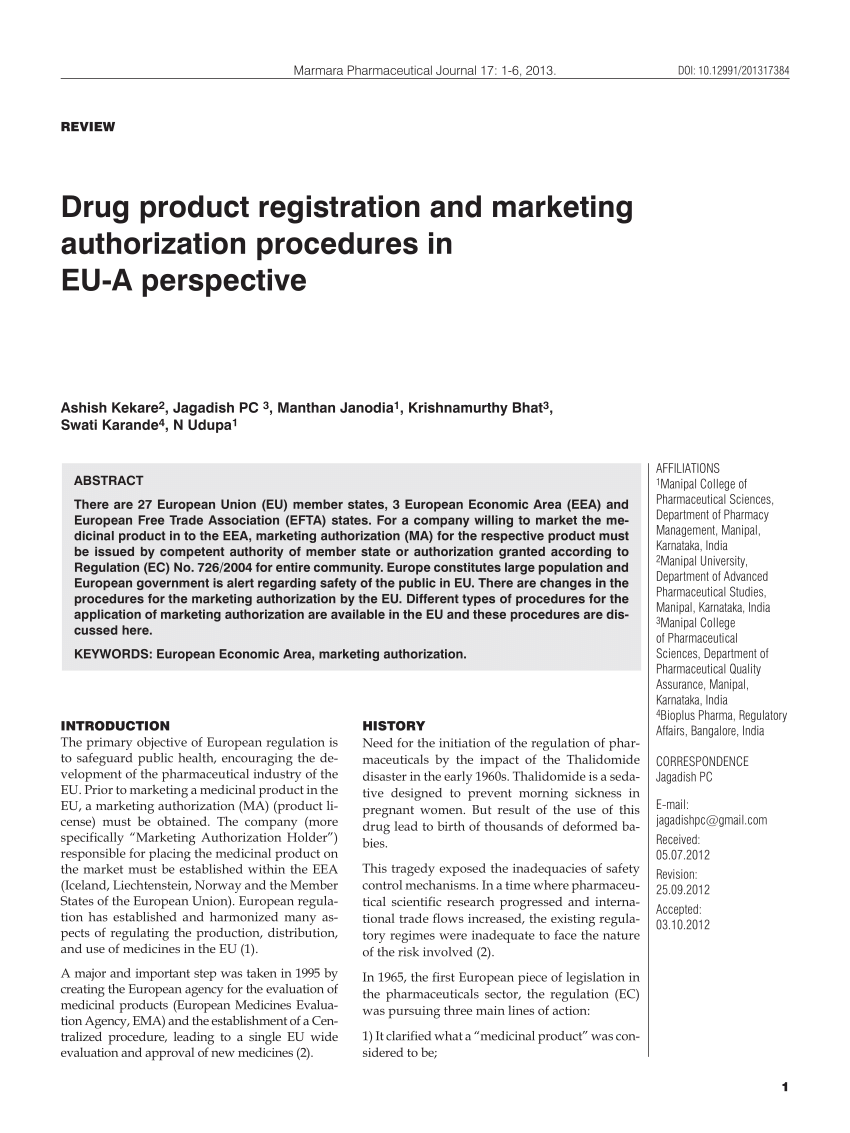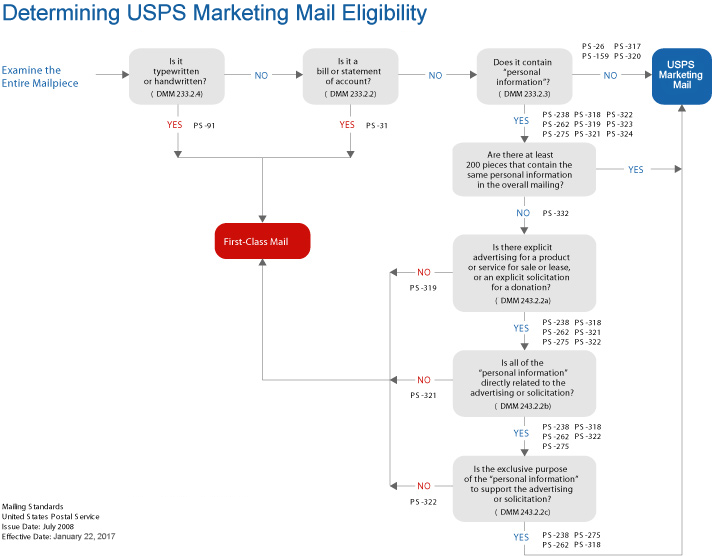In the world of business, marketing is a dynamic and crucial component. It is the driving force that propels businesses towards their goals. Moreover, as we delve into its diverse landscape, we stumble upon vibrant techniques that promise successful market penetration and customer engagement. One such method that has been increasingly gaining traction is differentiated marketing. But, what does differentiated marketing mean? This article aims to illuminate this subject by providing an in-depth understanding of its definition, strategies, and illustrative examples.
In this fast-paced era, where customer needs and preferences are continually evolving, adhering to a one-size-fits-all marketing approach may not yield fruitful results. Hence, businesses resort to a tailored marketing approach that resonates with the varying needs of their diverse target audience. The said approach is referred to as differentiated marketing or segmented marketing.
This article has been composed with a keen focus on equipping you with extensive knowledge about differentiated marketing. It will take you through its core premise, various tactics employed, and practical examples portraying the effectiveness of this marketing strategy. Whether you are a marketing novice or a seasoned professional, this comprehensive guide will provide you with insights that would prove instrumental in comprehending and leveraging the benefits of differentiated marketing.
With this foreword, let’s dive deep into the myriad facets of differentiated marketing and unveil its power in driving business growth.
Exploring Market Segmentation and Differentiation
The practice of implementing a distinct marketing mix to a specific group of consumers within the market is referred as differentiated marketing. This approach goes beyond broad spectrum advertising, instead focusing on key consumer segments and tailoring promotional efforts specifically to them. This consumer-focused strategy aims to amplify consumer satisfaction and increase market share.
Differentiated marketing involves a thorough study of the market to identify subsets of consumers with common characteristics. These subsets, or segments, differ in purchasing habits, interests, and needs, rendering them responsive to differing marketing techniques. This strategy allows businesses to appeal to each consumer segment uniquely, creating more value and bolstering the chances of conversion.
Core Principles of Differentiated Marketing
- Market Segmentation: This entails dividing the total market into distinct, manageable subsets of consumers that share common characteristics and responses to the market.
- Targeting: After segmenting the market, companies must identify which of the segments are more likely to bring more profits when targeted.
- Differentiation: Finally, firms must devise distinct marketing mix for each target segment, effectively ‘differentiating’ their approach to match the specific needs and preferences of the targeted consumers.
In conclusion, the main allure of differentiated marketing is the ability to cater to the unique needs of various consumer groups. Companies get to know their consumers on a more intimate level, understand their needs and deliver tailored solutions. This not only improves consumer satisfaction, but strengthens brand loyalty and overall market presence.
The Development and Progression of Tailored Marketing Techniques
The historical progression of tailored marketing strategies, also known as differentiated marketing, constitutes a fascinating journey. Notably, this journey began with mass marketing, with companies creating one-size-fits-all products for the entire market. Consequently, mass marketing did not regard the distinct needs of different customer segments.
However, the concept of differentiated marketing began to diverge significantly from mass marketing in the mid-20th century. A defining feature of this technique is its focus on differentiating market segments based on customer preferences, demographics, and behavior, as part of an evidence-based approach to satisfy consumers’ diverse needs and wants.
Technological advancements have greatly benefited the evolution of differentiated marketing. The rise of digital marketing has also brought forth exciting new opportunities and realities. Many businesses have shifted from a one-size-fits-all approach to customized solutions that target specific customer segments. With the rise of Big Data and improved data analytics, more nuanced and targeted marketing techniques are now a foundational reality.
- The Pre-Digital Age: Initially, differentiated marketing was employed with crude, rudimentary tools, considering only physical characteristics and geographical factors.
- The Advent of the Internet: The Internet ushered in digital advertising. This new environment provided abundant data, allowing marketers to develop more accurate and comprehensive customer personas with which to target their strategies.
- The Now-Age: With today’s advanced analytics and technology, marketers can identify and target even more specific niches, creating ultra-personalized experiences. Digital platforms now deliver tailored content based on user behavior, trends, and preferences. This is pushing differentiated marketing to new heights and promising an even more exciting future.
Thus, the history of differentiated marketing doesn’t merely chronicle the increased sophistication of marketing techniques over time. Rather, it reflects how society’s consumption patterns have evolved and how marketing strategies have adapted accordingly to meet the diversified needs of contemporary consumers.
Advantages Derived from Adopting Diversified Market Approaches
Diversified market approaches, widely known as differentiated marketing, bring with them numerous benefits for businesses. The advantages span from enhancing the company’s brand perception to securing a larger share of the market.
Boosts Brand Perception
One of the main benefits is an improved brand perception. By addressing individual needs and preferences, a company can appear more attentive and customer-centric. This, in turn, can significantly boost the brand perception among different market segments.
Wider Market Coverage
Another significant benefit is enhanced market coverage. A differentiated marketing strategy has the potential to cover a larger audience as it targets multiple market segments individually. This can contribute to an increase in the customer base and overall sales.
Increases Customer Retention
By adopting a differentiated marketing strategy, a business can also increase customer loyalty and retention. When customers feel their specific needs are addressed, they are more likely to stay loyal to that brand, enhancing customer retention.
Shields from Competition
Furthermore, diversified market approaches can provide a competitive advantage for companies. Businesses can stand out from competitors by offering products or services customised to the needs of various customer groups.
- Boosts Brand Perception: Enhance company reputation by catering to individual customer needs.
- Wider Market Coverage: Reach larger audiences by targeting multiple market segments.
- Increases Customer Retention: Retain more customers by making them feel valued and understood.
- Shields from Competition: Stand out from the competition by offering tailored products or services.
In conclusion, differentiated marketing strategies offer numerous benefits to businesses. These strategies not only aid in boosting brand perceptions, but also in expanding market coverage, increasing customer retention, and providing competitive advantages.
Complexities Involved in Customized Marketing
Customized marketing, also known as differentiated marketing, is indeed a powerful tool for businesses to gain a competitive edge in the market. Despite numerous advantages, it comes with its own set of trials and tribulations. One of the key complexities in implementing customized marketing is segmenting the market appropriately.
An organization must have a thorough understanding of their potential customer base to dissect it into meaningful and viable segments. This calls for a significant investment of resources in research and data analysis, both in terms of time and money. The segmentation process can be fraught with uncertainties since it depends on a multitude of factors like customer behaviour, market trends, geographic location, and many more.
Apart from segmenting the consumers, creating tailored marketing strategies for each group is another dilemma. Every marketing message must perfectly correspond to the preferences and needs of a specific segment. It includes factors such as selected marketing channels, message tone, and presentation. Often, developing and maintaining separate marketing plans demands considerable manpower and budget, making it a complex venture for smaller businesses.
Finally, yet importantly, comes the challenge of evaluating marketing efficacy. In a differentiated marketing landscape, tracking the success or failure of individual strategies is essential. However, collecting data, analyzing results and making improvements can be a time-consuming and strenuous task.
In spite of these complications, the advantages of differentiated marketing often outshine the trials. It allows businesses to cater to their clientele in a more personalized and effective manner, enhancing customer satisfaction and brand loyalty. However, it is crucial for a firm venturing into this territory to be prepared for the potential challenges and devise robust measures to overcome them.
Exploring Various Tactics in Tailored Marketing Techniques
Marketing professionals adopt a myriad of tactics to fine-tune their approach to targeted marketing campaigns also known as differentiated marketing strategy. Here, we explore some of the key strategies that are employed.
Using Demographics
One of the common ways to classify consumers is based on their traits, known as demographics. This includes characteristics such as age, gender, education, profession, income, and marital status. By gaining an understanding of these demographics, businesses can tailor their products or services to meet their targeted customers’ specific needs.
Behavior-based Segmentation
Another approach in the differentiated marketing technique centers around user behaviors. Marketers examine a consumer’s purchasing decisions, user engagement frequency, and content interaction to observe patterns and tailor their strategy accordingly. It helps in creating campaigns that resonate strongly with consumers and prompt them to make a purchase.
Aiming at Geographic Locations
Geography plays a significant role in the tailored marketing strategy. Businesses may customize their offerings based on the specific geography they are targeting, taking into account the customer’s climate, population density, and cultural preferences. Such a strategy allows for a more personal touch in marketing efforts, contributing to a higher success rate in these targeted locations.
Segmenting via Psychographics
In addition to demographics and geography, consumer’s interests, attitudes, beliefs and lifestyle also play a crucial role in differentiated marketing. This classification forms the basis of psychographic segmentation. Companies can leverage these insights to influence potential and existing customers by tailoring their marketing communications.
Through these various strategies, differentiated marketing can serve as a powerful technique for businesses to reach diverse consumer groups effectively and efficiently.
Key Components of Tailored Marketing Approach
Implementing a framework for personalized marketing comes with its challenges, but it can bring immense value if executed correctly. Several elements are crucial to effectively establish this diversified strategy.
Profiling and Segmentation
Creating a specific and detailed client profile is instrumental in identifying and understanding the target groups. The technique involves distinction of a company’s audience based on several aspects such as demographic information, buying behaviour, and psychographic characteristics. By doing this, a business can develop tailored messages and products to cater to the specific needs and preferences of each segment.
Understanding Consumer Behaviour
Comprehension of customer attitudes, motives, and decision-making methods is paramount when it comes to geared marketing. This requires a deep dive into analytics and metrics to identify trends and patterns in purchasing behaviour. Utilising these insights can enable businesses to predict future consumer behaviour and strategise accordingly.
Product Differentiation
Offering unique, distinctive products or services is another essential aspect of a marketing strategy based on variety. This could be anything from high-quality goods, innovative features, competitive pricing, superior customer service, or even packaging design. A company’s offerings must stand out in some way from its competitors to attract and retain specific customer segments.
Communication Strategies
A well-conceived communication approach is an indispensable part of tailored marketing. It determines how a brand communicates its value proposition to the target audience segments. This could be via traditional advertising channels, social media platforms, or direct marketing techniques. Building a solid relationship with consumers through effective communication is key to successful geared marketing.
Tracking and Optimisation
Constant monitoring and optimisation of marketing strategies are required for businesses to stay ahead in a dynamic market. Companies should be ready to tweak their strategies based on changes in consumer behaviour, market trends, and competitive actions. Regular tracking allows businesses to measure the effectiveness of their diverse marketing strategies and make necessary adjustments.
Steps to Build an Effective Differentiated Marketing Plan
Creating a successful differentiated marketing approach can significantly enhance target audience engagement and boost business growth. Here are some steps that businesses can follow to effectively implement a differentiation strategy in their marketing campaigns:
1. Understand your audience
The bedrock foundation of a prosperous differentiated marketing strategy is a comprehensive understanding of the target audience. Businesses need to thoroughly examine their potential customers’ needs, interests, behaviors, and preferences. This can be done through market research and customer data analysis. By understanding your audience, you can tailor your marketing messages to resonate with their specific needs and preferences.
2. Segment your marketplace
Once you have a good understanding of your audience, the next step is to segment your marketplace. Break down your prospective customers into specific subgroups based on common traits such as age, geographic location, income level, lifestyle, or buying behavior. Each segment has unique needs and wants that you can address through customized marketing programs.
3. Develop unique marketing mixes for each segment
For each market segment, businesses need to develop a unique marketing mix – a combination of product, price, place, and promotional strategies – that suit the segment’s preferences. This differentiation will help your products or services stand out to each specific market segment and could lead to increased conversions and sales.
4. Regularly review and update your strategy
Like most marketing strategies, differentiated marketing is not a “set it and forget it” technique. Emphasize on frequent monitoring, review, and updating of your marketing approach to ensure it remains effective and relevant. Consider customer feedback, market trends, and competitor activities during this analysis to keep your marketing strategy cutting-edge.
In conclusion, an effective differentiated marketing strategy requires a deep understanding of your target audience, careful market segmentation, and crafting of unique marketing mixes for each segment. Regular monitoring and adjustments are also crucial to ensure the strategy’s continued success.
Detailed Analysis: Implementing Distinctive Advertising Approaches
Starbucks: A Stellar Example
Consider one of the world’s leading coffee houses, Starbucks. This retailer successfully delivers a tailor-made strategy to cater to its diverse customer base.
Understanding the Customer
From the tech-savvy millennial searching for a workspace with robust Wi-Fi to the discerning connoisseur seeking an exclusive brew, Starbucks acknowledges and caters to its customers’ varying needs through its strategic initiatives. This is not a hap-hazard approach, but a well-researched, flexible and precise methodology aligning with their business goals.
Customizing the Offerings
Starbucks offers not just coffee, but an experience. Differentiated product lines, modified to appeal to different tastes and preferences, showcase this strategy. For instance, customers seeking health-oriented products can find sugar-free, vegan, and other health-conscious options in their menu. Meanwhile, those looking for exotic flavors can enjoy seasonal beverages like Pumpkin Spice Latte in the autumn.
Leveraging Technology
Starbucks applies modern technology to enrich its differentiated marketing campaigns. Their mobile app rewards loyalty and encourages repeat purchases, while allowing customization virtually. They have further fine-tuned their approach by offering personalized deals based on the purchasing habits of individual customers.
Resulting Success
These initiatives, combined with effective communication, have enabled Starbucks to draw in diverse customer groups, foster loyalty, and ultimately, to achieve considerable market success. Their distinctive approach to marketing underscores the effectiveness of differentiated marketing in action – a fine illustration of theory meeting practice.
Understanding Common Misbeliefs Related to Market Segmentation Strategy
When it comes to the approach often referred to as “mass customization” or, in other words, differentiated marketing, a lot of wrong beliefs and misconceptions appear to be widespread. It’s fundamentally important to debunk these myths to grasp the true essence and potential of this marketing methodology.
Misconception 1: One-size-fits-all Technique
One of the most common misconceptions about differentiated marketing is that it’s a single, one-size-fits-all technique that applies equally to all businesses. However, it’s far from the truth. This strategy’s effectiveness largely depends on the business type, target audience, and the resources at hand.
Misconception 2: Triggers Immediate Success
Some people erroneously believe that adopting a differentiated marketing strategy guarantees instant results. But, in reality, this strategy does not assure immediate success. It is a gradual process that requires diligent implementation, constant monitoring, and regular adjustments based on the feedback.
Misconception 3: Too Expensive
Often, differentiated marketing strategy is considered as costing an arm and a leg. While it’s true that this approach might require some upfront investment, the long-term benefits, in terms of customer satisfaction and brand loyalty, often outweigh the initial expenses. Smaller businesses can also adopt cost-effective digital platforms for implementing this strategy.
Misconception 4: Limits Creativity
Another fallacy about differentiated marketing is that it restricts creativity, as businesses have to stick with specific guidelines for each segment. However, this is a demonstrably incorrect assumption. The very essence of this marketing approach encourages companies to think outside the box and come up with innovative ways to cater to different segments.
Thus, by busting these misconceptions, businesses can implement differentiated marketing strategies more effectively, ultimately driving growth and success.
Guidelines for Implementing Differentiated Marketing
In the realm of directing promotional efforts to multiple market segments, differentiated marketing shines as a versatile approach. However, companies need to follow a specific set of behaviour to steer clear of any hurdles that might disrupt the flow of their marketing strategies. Here are some “do’s” and “don’ts” to bear in mind:
Do’s
- Understand Each Market Segment: It is critical to comprehend the distinct characteristics, needs, and behaviours of each target segment. Equip your team with as much knowledge as possible about every segment so that the designed strategies align with the customers’ requirements.
- Evaluate and Re-evaluate: After defining the market segments and strategies, continually monitor and adjust your plans based on market responses. It’s vital for the businesses to maintain flexibility and adaptability in their marketing strategies.
- Offer Value: Ensure that your offerings provide real value to each target market segment. Remember, if customers see value in your product or service, they’ll keep coming back.
Don’ts
- Avoid Generalized Marketing: Differentiated marketing means tailoring specific marketing tactics for specific audience segments, so avoid applying the same strategy across all segments.
- Never Neglect Feedback: The feedback loop is essential for your business. Ignoring customer complaints, suggestions or recommendations may lead to a decline in your market presence and reputation.
- Don’t Underestimate the Competition: Always stay informed about the tactics being utilised by your competitors. Knowing where you stand in the market will help you differentiate your offerings effectively.
As a final note, using differentiated marketing method strategically and empathetically can have a substantial positive effect on both the customers and the business itself.
Emerging Trends in Tailored Marketing Approaches
With the continuous evolution of technology and business practices, the way in which companies conduct their marketing efforts also experiences a dynamic shift. Specifically, tailored marketing strategies, also known as differentiated marketing, are now becoming more refined and personalized than ever before. The upcoming trends in this marketing approach are worth considering for businesses aiming to stay competitive.
Artificial Intelligence and Machine Learning
One of the pioneering trends in tailored marketing strategies is the integration of Artificial Intelligence (AI) and Machine Learning. These technologies enable businesses to analyze consumer behavior in a more sophisticated and precise manner. Such insights then allow for the development of more targeted and personalized marketing campaigns, aligning with the distinct preferences of each customer.
Increased Use of Data-driven Strategies
Another notable trend is the increased use of data-driven strategies. Businesses today amass enormous volumes of data daily. By studying and learning from this data, companies can design direct and effective marketing strategies that cater to the unique needs of their consumer base. Technology plays a vital role here, helping companies to make sense of the information and use it for marketing purposes effectively.
Social Media-as-a-Service
Social networks have become key platforms for implementing a differentiated marketing strategy. More companies are recognizing social media’s power to reach distinct market segments. The trend of ‘Social Media-as-a-Service’ is emerging. Here, companies are leveraging social media platforms to deliver differentiated marketing messages and engage with customers individually, which could lead to more significant customer retention and satisfaction.
Personalized User Experience (UX)
With the rise of digitalization, delivering personalized user experiences is also becoming a significant part of differentiated marketing. Businesses are now focused on creating customer-centric websites, apps, and platforms. By offering a customized user experience, companies aim to drive customer satisfaction and loyalty.
In conclusion, the future of differentiated marketing holds exciting prospects. With these trends in mind, businesses can more effectively connect with their customers, boosting their market presence and profitability in the long run.
FAQ: What is differentiated marketing
.What is undifferentiated marketing and how does it differ from concentrated marketing?
Undifferentiated marketing, also known as mass marketing, is a strategy that targets a broad market with a single marketing message. In contrast, concentrated marketing focuses on a specific, well-defined segment.
How does a differentiated marketing strategy work?
A differentiated marketing strategy involves targeting multiple market segments with different marketing strategies, tailoring products, and offers to meet the specific needs of each segment.
Can you give examples of differentiated marketing?
Examples of differentiated marketing include a clothing brand offering different lines for different age groups or a technology company creating different marketing campaigns for personal and business users.
Why might a business choose to use a differentiated marketing strategy?
A business might use a differentiated marketing strategy because it allows for targeting different segments more effectively, potentially increasing sales and market share across a range of products.
What are some disadvantages of differentiated marketing?
Disadvantages of differentiated marketing include higher costs due to creating different products and marketing materials for each segment, and potentially spreading marketing resources too thin.
How does a concentrated marketing strategy compare to a differentiated strategy?
A concentrated marketing strategy focuses on a single market segment, dedicating all marketing efforts to understanding and serving that segment, whereas a differentiated strategy targets multiple segments with different approaches.
In what ways can differentiated marketing be a powerful tool for content marketing?
Differentiated marketing is a powerful tool for content marketing as it allows for creating more relevant and targeted content that resonates with different segments, thus improving engagement and effectiveness.
Why is differentiated marketing considered a marketing strategy that focuses on customer needs?
Differentiated marketing is considered a strategy that focuses on customer needs because it tailors products and marketing messages to specific segments, ensuring that the unique needs and preferences of each group are addressed.
How can differentiated marketing help achieve marketing goals?
Differentiated marketing can help achieve marketing goals by effectively reaching and engaging different target markets, leading to increased brand recognition, customer loyalty, and ultimately, higher sales.
What is the role of email marketing in a differentiated marketing strategy?
In a differentiated marketing strategy, email marketing plays a key role by allowing for personalized communication with different segments, delivering tailored messages and offers that align with the specific interests of each group.
What is the key position of a differentiated marketing strategy in a business’s overall marketing plan?
The key position of a differentiated marketing strategy within a business’s overall marketing plan is to target multiple customer segments with tailored marketing approaches, allowing for a more personalized and effective reach to diverse audiences.
How does an undifferentiated marketing strategy differ from a differentiated marketing strategy?
An undifferentiated marketing strategy targets the entire market with a single approach, treating all potential customers as a homogeneous group, while a differentiated marketing strategy involves creating specific marketing tactics for different segments.
What are the advantages and disadvantages of using a differentiated targeting strategy?
Advantages of a differentiated targeting strategy include better customer satisfaction through tailored offerings and increased market share. Disadvantages include higher costs due to creating multiple marketing campaigns and potential brand dilution.
Can differentiated marketing be effectively applied to similar products?
Yes, differentiated marketing can be applied to similar products by positioning them differently to appeal to various segments, emphasizing unique aspects or benefits that resonate with each target group.
How does differentiated marketing compare to undifferentiated marketing in achieving marketing goals?
Differentiated marketing, by addressing specific needs of different segments, can be more effective in achieving marketing goals like customer loyalty and market penetration, compared to undifferentiated marketing which applies a broad, generic approach.
What makes a differentiated marketing strategy a critical component of multi-segment marketing?
A differentiated marketing strategy is critical in multi-segment marketing as it allows for customizing marketing efforts to meet the distinct needs and preferences of each segment, thereby maximizing the effectiveness of the marketing plan.
How can a business benefit from implementing a differentiated marketing strategy?
Implementing a differentiated marketing strategy allows a business to better meet the diverse needs of its customer base, potentially leading to increased customer satisfaction, loyalty, and a stronger market position.
In what ways does differentiated marketing differ from multi-segment marketing?
Differentiated marketing focuses on developing distinct marketing mixes for different segments, while multi-segment marketing may involve targeting multiple segments but not necessarily with distinct strategies for each.
Why is differentiated marketing considered an effective strategy for products with diverse customer bases?
Differentiated marketing is considered effective for products with diverse customer bases because it caters to the specific needs and preferences of each segment, increasing the relevance and appeal of the marketing message.
What are the key steps in creating a differentiated marketing strategy?
Key steps in creating a differentiated marketing strategy include identifying distinct customer segments, understanding their unique needs and preferences, developing tailored marketing approaches for each, and continuously monitoring and adjusting strategies based on performance and market changes.

